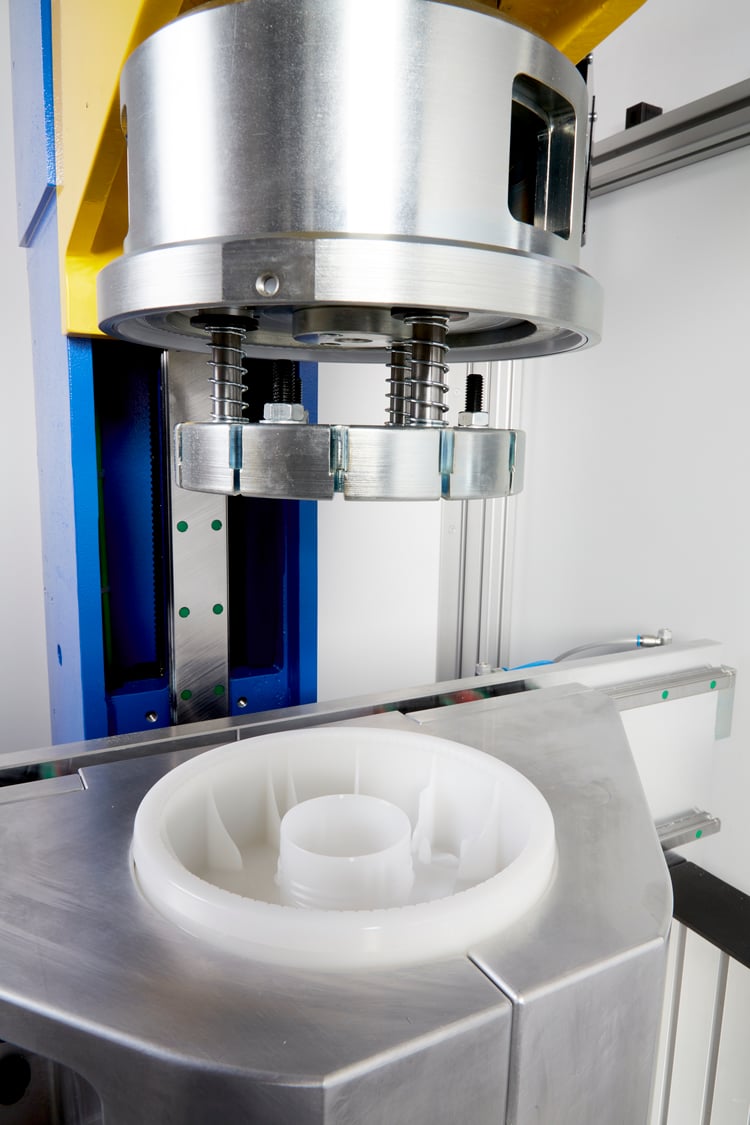
Spin welding is a widely used plastic welding technique known for its reliability and efficiency in creating strong, leak-proof joints. This comprehensive guide aims to demystify the spin welding process, providing design engineers with a step-by-step understanding of achieving successful spin welds.
Whether you are new to spin welding or looking to enhance your knowledge, this article will equip you with the essential information to make informed decisions and optimise your plastic welding processes.
Understanding Spin Welding: Spin welding involves rotating one plastic component against another while applying pressure to create frictional heat, resulting in a fusion between the parts. It is commonly used in various industries for joining thermoplastic materials. Proper joint design is crucial for successful spin welding. Consider factors such as material selection, joint configurations, and component compatibility to ensure optimal weld strength and integrity. Spin welding offers several advantages, including hermetic seals, resistance to vibration and fatigue, and compatibility with different plastic materials.
Preparing for Spin Welding: When it comes to spin welding, selecting the right equipment is vital. Consider factors such as spindle speed, clamping force, and tooling options to ensure optimal performance and consistent weld quality. Proper surface preparation is essential to achieve reliable welds. Clean and chamfer the mating surfaces of the components, ensuring a precise fit. Additionally, carefully select the appropriate heating element based on the material properties and welding requirements.
Executing the Spin Welding Process: To achieve successful spin welds, determine the optimal spindle speed and time required for the specific material and joint design. Adequate clamping force is crucial to maintain proper contact between the components during the welding process. Regularly inspect the weld quality using visual examination, pressure testing, and, if necessary, destructive testing to ensure the integrity of the joints.
Spin Welding Troubleshooting: While spin welding is generally a reliable process, certain challenges may arise. Common issues include flash formation, insufficient or excessive weld strength, and component distortion. To overcome these challenges, employ effective troubleshooting techniques. Analyse the root cause of the problem and adjust the welding parameters, joint design, or equipment settings accordingly. With experience and proper troubleshooting techniques, you can optimise the spin welding process and achieve consistent, high-quality welds.
Spin welding is a versatile and efficient plastic welding technique that offers numerous benefits for design engineers in various industries. By understanding the step-by-step process of spin welding, including joint design, equipment selection, execution, and troubleshooting, you can ensure successful welds and achieve reliable, high-quality joints.
To further enhance your knowledge and gain practical insights, we invite you to download our comprehensive "Spin Welding Guide" from our website spin welding process. This guide provides in-depth information, tips, and best practices for mastering the spin welding process.




